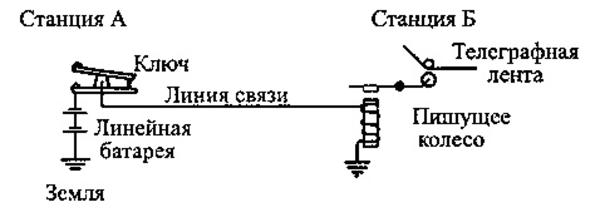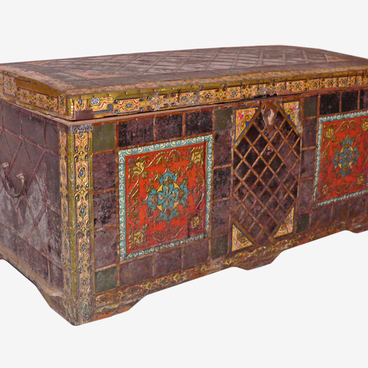In 1837, the American artist and inventor Samuel Morse developed a telegraph code in which each letter of the alphabet was designated by certain combinations of dots and dashes. The Morse telegraph is designed, very simply, by the principle of circuit and current interruption. When the telegraph operator squeezes the lever, it touches a protrusion connected by a wire to the battery. At this moment, the current rushes along the line to a receiving device in another location. At the receiving station, a narrow tape of paper is wound on a special drum, which is continuously moved by a clock mechanism. Under the action of the incoming current, the electromagnet attracts an iron rod to itself which pierces the paper, thus reproducing the sequence of signs received.
Morse code (named for its creator) has become an integral part of the work of the telegraph. The letters here represent combinations of long and short signals. Morse code was modified to its modern form by the German journalist Friedrich Gerke 10 years after its creation.
In general, the Morse apparatus turned out to be so convenient and practical that, after some alterations and improvements, it not only was widely disseminated in many countries, but was also used to one degree or another at all telegraph stations until the 1960s. The only drawback was the unsuitability of the apparatus for printing letters. With the passage of time, Morse devices ceased to keep up with the growing demands placed on telegraph communication. Direct-printing machines appeared, and they had serious advantages over the Morse machine.
The greatest applications for Morse code were found within the military. Sailors and rescuers made use of it until nearly the end of the 20th century. Today, Morse code is used mainly by radio enthusiasts. Occasionally, the the code is still used in the most remote corners of the globe — for example, at the North Pole or in the depths of the ocean. On the modern Internet, programs exist which translate information into the encrypted form of Morse code.
The Morse telegraph here on display was found in the city of Solvychevódsk, Kotlássky District, Arkhángelsk Regio
Morse code (named for its creator) has become an integral part of the work of the telegraph. The letters here represent combinations of long and short signals. Morse code was modified to its modern form by the German journalist Friedrich Gerke 10 years after its creation.
In general, the Morse apparatus turned out to be so convenient and practical that, after some alterations and improvements, it not only was widely disseminated in many countries, but was also used to one degree or another at all telegraph stations until the 1960s. The only drawback was the unsuitability of the apparatus for printing letters. With the passage of time, Morse devices ceased to keep up with the growing demands placed on telegraph communication. Direct-printing machines appeared, and they had serious advantages over the Morse machine.
The greatest applications for Morse code were found within the military. Sailors and rescuers made use of it until nearly the end of the 20th century. Today, Morse code is used mainly by radio enthusiasts. Occasionally, the the code is still used in the most remote corners of the globe — for example, at the North Pole or in the depths of the ocean. On the modern Internet, programs exist which translate information into the encrypted form of Morse code.
The Morse telegraph here on display was found in the city of Solvychevódsk, Kotlássky District, Arkhángelsk Regio




